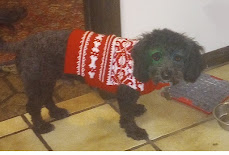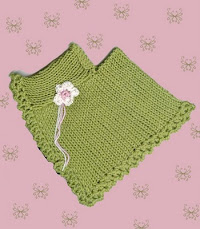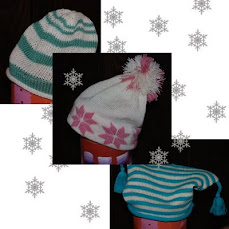I am in
search of a project for charity for 2020.
I like to do multiples of the same pattern to make life easy on
myself. Last year it was hats, and I’m
over that for a while, even though they were super fast. This little vest took me an hour to knit and
about a half hour to sew all together.
I’m hoping I get faster at it.
Came upon
this pattern on the Long Buckby Machine Knitters website a while ago and
thought it was such a good idea. I do
want to give credit since this is such an innovative idea. Seems useful.
The body warmer/vest is for low birth weight babies or those with lines
in their arms in the neonatal intensive care unit of the hospital. Having no sleeves, the vest wouldn’t
interfere with the medical intervention.
Of course,
like most machine (and maybe hand) knitters, I had to change the pattern a bit.
Specifically, I decreased more stitches at the shoulders. Also I didn’t add
anything decorative to the body since I wanted this to be speedy. This is my first draft of the revised pattern,
the one I used to knit the vest in the picture.
I am contemplating making the armholes shorter/smaller, but maybe is ok
the way it is since the baby would have a sleeper under it.
Machine-
standard gauge
Yarn-
basically any that works with your machine.
Size isn’t so critical, it will turn out to be a mini size. Although wool would be warm, acrylic is
probably the best choice for easy laundering.
Only takes a few ounces.
Gauge- At
tension 7, I got about 7 stitches and 9 rows to the inch on the stockinette, resulting in the vest
being about 6 inches wide after the bottom rib and about 6 inches long. Notice I’m a tad vague here. J
You will also need 3 small
buttons and sewing thread
DIRECTIONS
This is knit
in one piece up to the armholes.
RC 000 1 x 1 Rib
over 83 stitches, end stitches on the main bed.
After cast on change to T 2/2, knit 10 rows for the rib, then transfer stitches to the main bed. Attach
main carriage. Increase one stitch to 84 stitches. If you don’t have a ribber, you could do mock
rib or a hung hem. Just a word about hung hems on such a small garment,
though. Tried it, even drastically
changing the underside of the hem to be tighter---it tends to flip up. You are certainly welcome to try other hems,
though.
Body knit to RC 36.
Armhole and Shoulder (Be sure to pass the carriage far enough to register the rows. ) Put machine on hold. Put
all stitches in hold except for the 17 stitches on the right end of the
machine. Very furthest stitches on the
right end up to be the center of the vest.
Use a full fashioned decrease. On
RC 37 decrease one stitch on left and one stitch on the right. Knit 2 rows.
RC 39 decrease one stitch on left and one stitch on
the right. Knit 2 rows. Decrease one stitch on the right only now every
2 rows until you have 10 stitches left.
Knit to RC 64. Take these
stitches off on several rows of waste yarn.
Other
armhole and shoulder: Since your
stitches and machine are in hold you can scoot your carriage to the other side
of the bed with no dropping of stitches. Repeat what you did on the first
shoulder, reversing the shaping. Take
these 10 stitches also off on several rows of waste yarn.
Back Turn the row counter back to 36. Take the machine off hold. Knit one row.
Bind off 8 stitches at the beginning of
each of the next 2 rows. Now you have 34 stitches for the back.
Knit plain
to RC 64. Put machine on hold, stitches to hold except for the far right 10
stitches. Take these stitches off on
several rows of waste yarn.
Carriage to
the other side of the bed. Put 10
stitches in work and take these stitches off on several rows of waste yarn.
Bind off around
the gate pegs these back neck stitches with main yarn.
Join the shoulders With the right (stockinette ) side facing you, fold back the
waste yarn of the shoulder so you can see the purl bumps.
Hang the 10 shoulder stitches, needles all the way out and stitches
pushed back. Fold garment so wrong side
is facing you, with the matching shoulder, hang the 10 shoulder stitches in the
hooks of the needles. Close the latches
and with a straight edge push the stitches in the hooks through the back
stitches. Use the latch tool to bind off
around the gate pegs. Repeat for the
other shoulder.
Button band Do a 1 x 1 rib over 9 needles (5 on
main bed and 4 on the ribber). After the
cast on, change to T 2/2 RC 000 and knit 4 rows.
(Super easy buttonhole) *Make a buttonhole by transferring the middle
stitch on the main bed to an adjacent stitch on the ribber. Leave the main bed needle in work. Knit 12 rows.* Repeat two more times for 3
buttonholes total. (Row 4, 16, and
28) Knit to RC 140. Do a loop through
loop bind off so the end looks sorta like the beginning. To do this, transfer the rib stitches to the
main bed. Knit the last row right to
left at T 6. Pull the second stitch
through the first across the bed using the larch tool. Fasten off the last
loop.
BTW,
I purchased a rib comb that accommodates 60 stitches and it’s ideal for
small ribs like this of only 9 stitches. Much lighter weight than the regular ribber comb. Well worth it. Otherwise you have to use a big clunky ribber
comb that came with your ribber, or devise some other method of holding down
the stitches.
If you are making this without a
ribber you could hang the front stitches all the way around. Remember to add 3 button holes.
Finishing Sorry there are so many ends to work
in. Will see if I can minimize this. Remove waste yarn at the shoulders. Find the
middle of the rib strip and the middle
of the back neck. Depending on which side you put the buttonholes, you can
indicate boy or girl, but this seems unimportant to me. Pin the
mid points together so the band sits evenly.
Mattress stitch the rib to the vest.
Work in the yarn ends. Sew on 3 small buttons with sewing thread.
I didn’t
steam this, but you could. It is recommended to wash without perfume in the
detergent or dryer sheets. Put in a sandwich bag to keep clean when donating.
Thanks to the Long Buckby machine knitters for inspiring me! Let me know if you give this a try and any modifications you did.




























































































